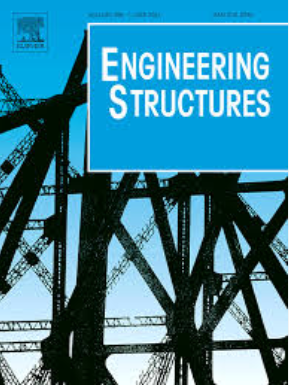Inverse design of self-rotating dual-platform biomimetic mechanical metamaterials via additive manufacturing
IF 6.4
1区 工程技术
Q1 ENGINEERING, CIVIL
引用次数: 0
Abstract
To enhance the mechanical properties of auxetic structures, numerous designs have been developed and analyzed. However, many existing methodologies lack comprehensive principles to effectively guide other structural design processes. In this study, a novel buckling-based biological windmill auxetic structure is introduced. First, a comparative analysis of the mechanical properties across different biological windmill structures was conducted. Then, a buckling design approach was employed to enhance the deformation characteristics and stress-strain behavior of windmill auxetic structures. Finally, an inverse design process was implemented to identify the optimal target structural parameters by Bayesian-optimized Gaussian process regression models. The results indicate that the “X” crossbar design method achieves greater specific energy absorption (SEA), smoother platform stress, making it particularly suitable for shock energy absorption applications. Additionally, the re-entrant structure design method demonstrates superior SEA, and outstanding crushing energy absorption (CFE). The buckling design of the support rod not only provides exceptional SEA but also exhibits favorable crushing modes. This study advances the concept of rotating auxetic structures, by investigating their crushing behavior and energy absorption characteristics, offering valuable insights for the further development of auxetic structural design methodologies.
基于增材制造的自旋转双平台仿生机械超材料反设计
为了提高减震结构的力学性能,人们开发和分析了许多减震结构的设计。然而,许多现有的方法缺乏全面的原则来有效地指导其他结构设计过程。本文介绍了一种基于屈曲的新型生物风车减震结构。首先,对不同生物风车结构的力学性能进行了比较分析。在此基础上,采用屈曲设计方法提高了风车结构的变形特性和应力-应变性能。最后,利用贝叶斯优化高斯过程回归模型进行反设计,确定最优目标结构参数。结果表明,“X”横条设计方法实现了更大的比能吸收(SEA),更平滑的平台应力,特别适合于冲击能量吸收应用。此外,再入式结构设计方法具有优异的SEA和出色的破碎能量吸收(CFE)。支撑杆的屈曲设计不仅提供了出色的SEA,而且表现出良好的破碎模式。本研究通过研究旋转减震结构的破碎行为和能量吸收特性,提出了旋转减震结构的概念,为进一步发展减震结构设计方法提供了有价值的见解。
本文章由计算机程序翻译,如有差异,请以英文原文为准。
求助全文
约1分钟内获得全文
求助全文
来源期刊

Engineering Structures
工程技术-工程:土木
CiteScore
10.20
自引率
14.50%
发文量
1385
审稿时长
67 days
期刊介绍:
Engineering Structures provides a forum for a broad blend of scientific and technical papers to reflect the evolving needs of the structural engineering and structural mechanics communities. Particularly welcome are contributions dealing with applications of structural engineering and mechanics principles in all areas of technology. The journal aspires to a broad and integrated coverage of the effects of dynamic loadings and of the modelling techniques whereby the structural response to these loadings may be computed.
The scope of Engineering Structures encompasses, but is not restricted to, the following areas: infrastructure engineering; earthquake engineering; structure-fluid-soil interaction; wind engineering; fire engineering; blast engineering; structural reliability/stability; life assessment/integrity; structural health monitoring; multi-hazard engineering; structural dynamics; optimization; expert systems; experimental modelling; performance-based design; multiscale analysis; value engineering.
Topics of interest include: tall buildings; innovative structures; environmentally responsive structures; bridges; stadiums; commercial and public buildings; transmission towers; television and telecommunication masts; foldable structures; cooling towers; plates and shells; suspension structures; protective structures; smart structures; nuclear reactors; dams; pressure vessels; pipelines; tunnels.
Engineering Structures also publishes review articles, short communications and discussions, book reviews, and a diary on international events related to any aspect of structural engineering.
 求助内容:
求助内容: 应助结果提醒方式:
应助结果提醒方式:


